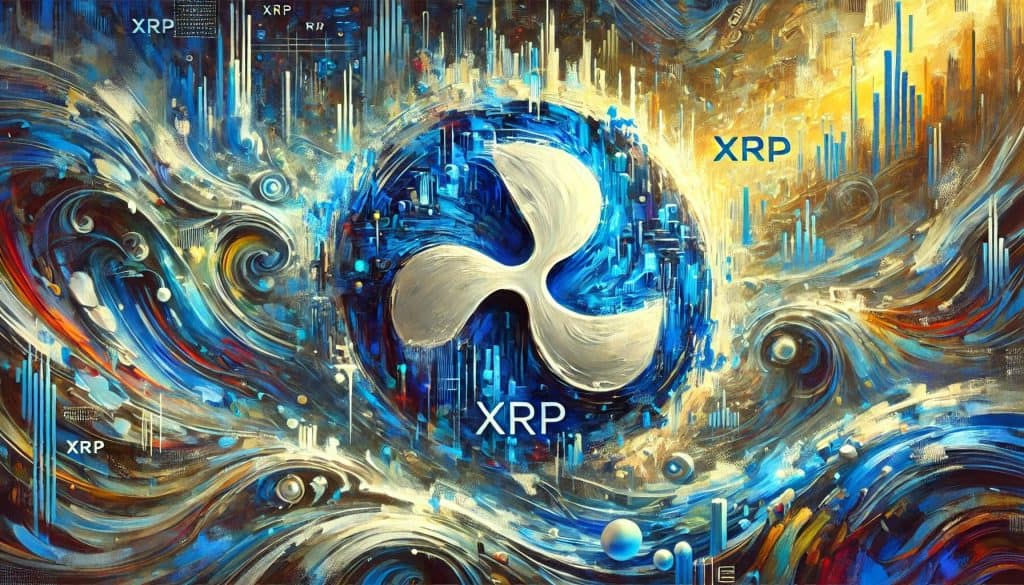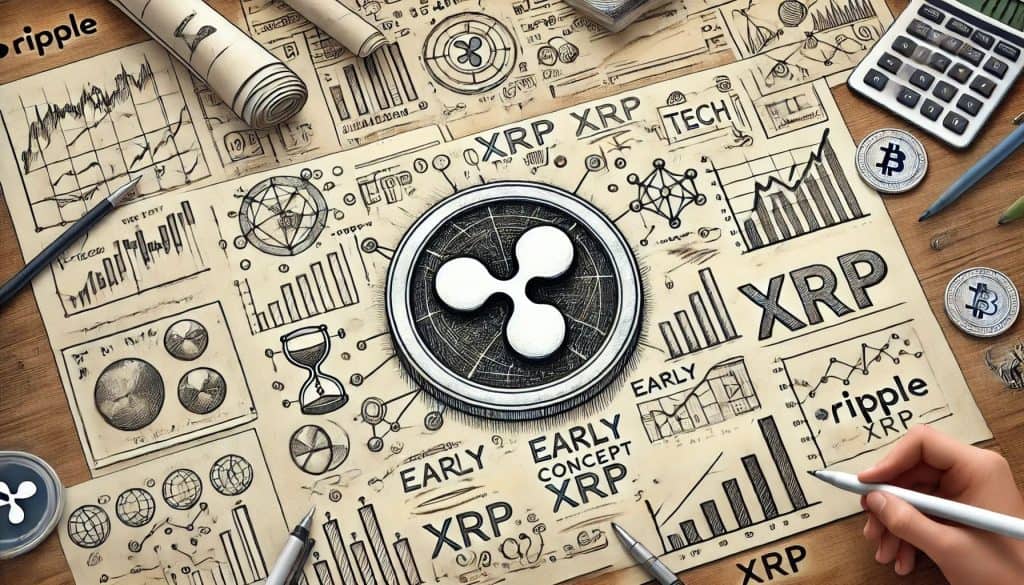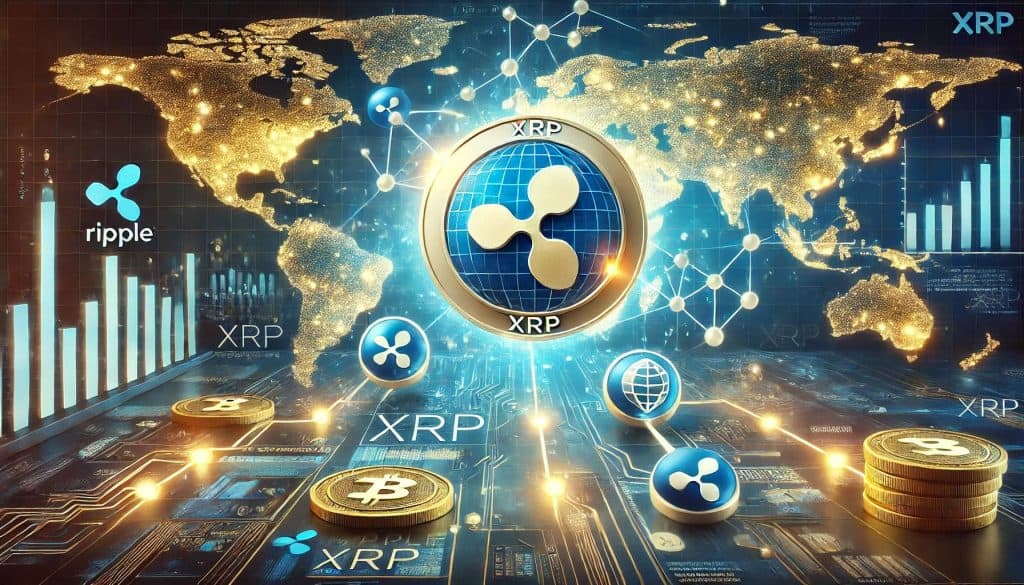In the rapidly evolving world of cryptocurrencies, understanding the nuances of different digital assets is crucial. Ripple (XRP) is one of the most interesting and unique cryptocurrencies out there, and this blog post will cover what it is, how it works, how it’s evolving, and its impact on the financial world.
What is Ripple (XRP)?

Ripple (XRP), commonly referred to as XRP, is a digital payment protocol and cryptocurrency designed to streamline cross-border transactions. Similar to the SWIFT system used by banks, Ripple’s focus is on providing a seamless and cost-effective way for financial institutions to send money globally.
Ripple (XRP) Background
Ripple was created in 2012 by Chris Larsen, Jada McKaleb, Arthur Britta, and others. It started out as OpenCoin, but was later renamed Rippleapps. Finally, it was changed back to XRP. Ripple’s main goal is to enable instant and cost-effective international payments by utilizing the Ripple ledger and native cryptocurrencies.
Development

Ripple’s journey began in 2011 with the development of Ripple Ledger. This open-source blockchain technology was designed to address Bitcoin’s limitations, particularly in terms of transaction speed and cost. Since its inception, Ripple has raised over $293.8 million in various funding rounds and expanded its services to include cryptocurrency liquidity and central bank digital currency solutions.
| Year | Events |
|---|---|
| 2011 | Development of the XRP ledger begins |
| 2012 | Ripple and XRP launch |
| 2015 | Rebranding to Ripple Labs |
| 2020 | Launch of the XRP Ledger Foundation |
| 2024 | Introducing new DeFi solutions and stablecoins |
Types of Ripple (XRP)
Ripple primarily uses XRP Ledger, an open-source blockchain designed for speed and efficiency. A cryptocurrency, is the bridge currency for Ripple’s payment protocol, which enables seamless cross-border transactions.
- Transaction speed: typically 3-5 seconds
- Cost: Minimum fee, often a fraction of a cent
- Energy efficiency: Less energy intensive than Bitcoin
- Scalability: Process up to 1,500 transactions per second
How does Ripple (XRP) work?
XRP uses a consensus protocol instead of the traditional Proof of Work (PoW) mechanism. This protocol allows for faster and more energy-efficient transaction validation. XRP acts as a bridge currency that allows for fast conversion between different fiat currencies. This reduces the need for pre-funded Nostro accounts that are traditionally required for cross-border payments.
Watch this video to learn more about Ripple (XRP) and how it works:
Ripple Pros and cons
Understanding Ripple’s advantages and disadvantages will help you evaluate its potential and risks. Here are some key pros and cons:
| Prose | Description | Cones | Description |
|---|---|---|---|
| Speed | Transactions are processed within seconds | Regulatory uncertainty | Ongoing legal issues with the SEC |
| Cost | Cost-effective with low transaction fees | Centralization issues | Ripple holds a significant amount of Ripple |
| Efficiency | Low energy consumption compared to Bitcoin | Market volatility | Ripple price can be very volatile |
| Scalability | High transaction throughput |
BTC vs. XRP
When comparing BTC and XRP, several key differences emerge. Below is a breakdown of the main differences between the two cryptocurrencies:
| Features | Bitcoin (BTC) | Ripple (XRP) |
|---|---|---|
| Key uses | Store of value, medium of exchange | Cross-border payments, liquidity |
| Transaction speed | Slow (10 minutes to several hours) | Fast (typically 3-5 seconds) |
| Transaction costs | High fees due to proof-of-work mechanisms | Minimum fee, often a fraction of a cent |
| Consensus mechanisms | Proof of Work (PoW) | Consensus protocols |
| Decentralization | Highly distributed | Ripple Labs centralizes a significant amount of XRP in a centralized location |
| Energy consumption | Highly energy-intensive due to mining | Low energy efficiency |
| Partnerships | Limited institutional partnerships | Extensive partnerships with financial institutions |
| Purpose | Primarily used as a store of value and for transactions | Designed for the speed and efficiency of cross-border payments |
Bitcoin (BTC) and Ripple (XRP) both serve different purposes and different aspects of the market. Bitcoin is known for its decentralization and security, but it suffers from slow and costly transactions. XRP , on the other hand, focuses on the speed and efficiency of cross-border payments through its numerous partnerships with financial institutions and the promotion of XRP’s use as a bridge currency.
Companies using Ripple (XRP)
Several major financial institutions have adopted Ripple’s technology to enhance their payment systems, including
Santander
His bank uses Ripple’s technology to provide faster international transactions, reducing processing times from days to seconds. By utilizing Ripple’s blockchain, Santander aims to provide a seamless and efficient service to its global customer base, allowing funds to be transferred across borders quickly and securely.
American Express
American Express will utilize XRP to enhance its cross-border payments capabilities, providing a more efficient payment network for its business customers. This partnership will enable American Express to provide real-time, traceable payments to enhance the overall customer experience for its international business customers.
SBI Holdings
SBI Holdings, a major Japanese financial services company, has integrated XRP into its payment system to facilitate faster and more secure transactions. SBI Holdings’ adoption of Ripple’s technology demonstrates the company’s commitment to innovation and efficiency in financial services while providing enhanced payment solutions to its customers.
Standard Chartered
The global bank uses Ripple to improve the efficiency of cross-border payments, ensuring faster and more reliable transactions. Standard Chartered’s partnership with XRP enables the bank to offer its customers a seamless international payments experience, reducing costs and speeding up transactions.
PNC Bank
PNC Bank has adopted Ripple’s technology to help its commercial customers receive instant payments, improving overall cash flow management. By integrating Ripple’s blockchain technology, PNC Bank aims to strengthen its banking operations by providing customers with a more efficient and transparent payment process.
These partnerships highlight the growing influence of the XRP company in the financial sector and its potential to revolutionize international payments.
Here’s what industry leaders are saying about the impact on Ripple
Applications of Ripple

Ripple’s technology is used in a variety of applications, most notably in finance:
Cross-border payments
Ripple’s technology addresses the inefficiencies of the traditional banking system by enabling faster and cheaper international transactions. The XRP ledger completes cross-border payments in seconds, significantly reducing the time and cost associated with international money transfers.
Provide liquidity
XRP serves as a bridge currency that provides on-demand liquidity to financial institutions. This capability allows banks and payment providers to access liquidity quickly and efficiently without the need for pre-funded accounts in various currencies. The Ripple system strengthens global financial operations by facilitating smoother and more cost-effective transactions.
Central bank digital currencies (CBDCs)
Ripple helps develop central bank digital currencies (CBDCs). By leveraging blockchain technology, Ripple provides central banks with the infrastructure they need to issue and manage digital currencies. This improves the efficiency, security, and transparency of national payment systems, thereby supporting the modernization of the global financial landscape.
Conclusion
Ripple (XRP) is ready to play a significant role in the future of global finance, thanks to its innovative technology and strategic partnerships. The adoption of Ripple’s technology by major financial institutions highlights its practical applications and potential benefits. Despite regulatory challenges, Ripple has the potential to simplify and revolutionize cross-border payments. As XRP continues to expand its services and integrate with financial systems, it has the potential to become an integral part of the financial infrastructure.
Key takeaways
- Ripple, commonly known as XRP, is a digital payment protocol and cryptocurrency designed to facilitate instant, low-cost international money transfers.
- Ripple (XRP) uses a consensus protocol and the XRP ledger to validate transactions quickly and efficiently.
- XRP acts as a bridge currency for cross-border payments.
- People use XRP globally, and financial institutions in various countries are adopting Ripple’s technology to enhance their payment systems.
See also
- Investopedia. Ripple definition.
- Forbes. What is Ripple (XRP)?
- Institute of Corporate Finance. Ripple.
